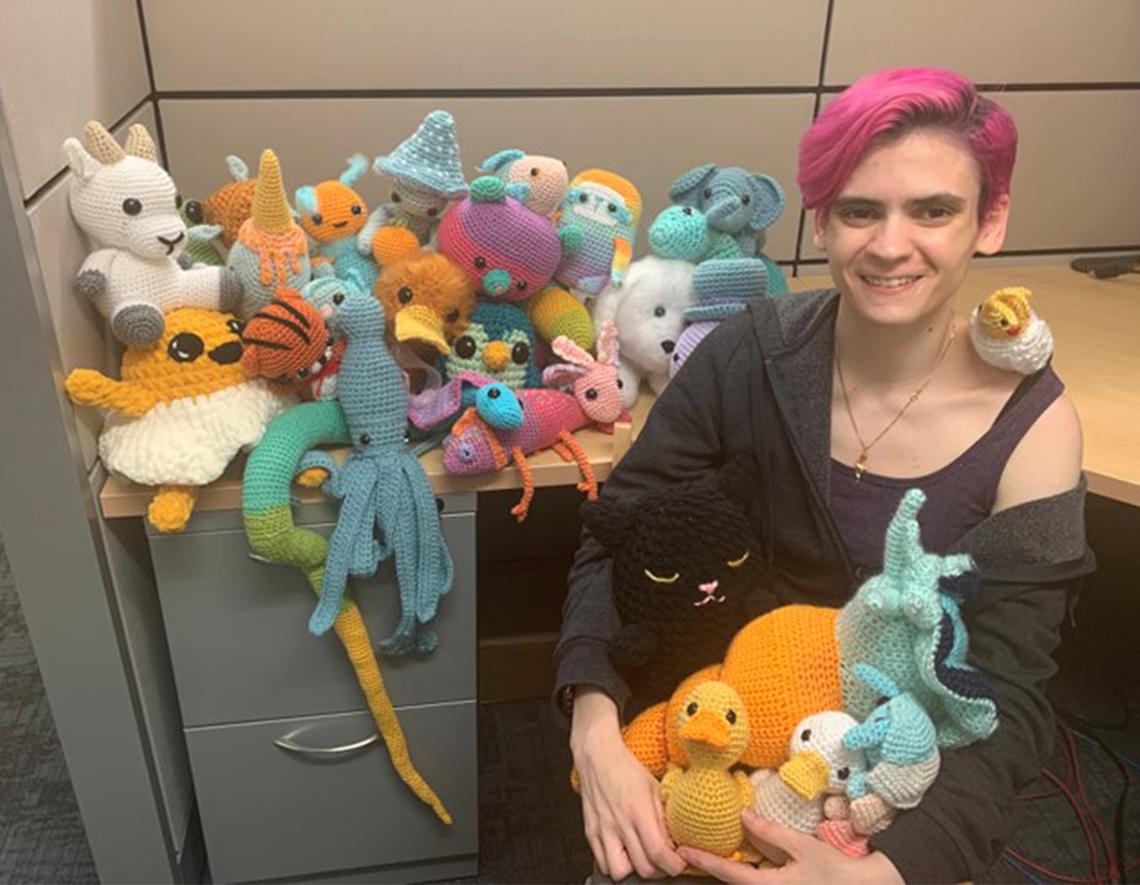Talent Beyond the Bench
NIH Fellows Make Plushies for Patients
Two fellows in Dr. Charles Venditti’s lab spent many hours crocheting what they’re calling Pam and Pauline’s Plushies for Patients.
“These are the coolest handmade stuffed animals I have ever seen,” said Venditti, a senior investigator in NHGRI’s Metabolic Medicine Branch.
Dr. Pam Head, an NIGMS postdoctoral research associate (PRAT) fellow, and Pauline Hoffman, an NHGRI postbac IRTA fellow, made 35 unique plushies for children who were stuck indoors at a medical conference in Bethesda over a weekend in June. The conference was for families grappling with MMA (methylmalonic acidemia), PA (propionic acidemia) and cobalamin deficiencies—rare, genetic metabolic disorders.
Head began crocheting in graduate school to pass the time during lectures. She started making stuffed animals earlier this year as gifts for colleagues returning to the office. When NHGRI clinical investigator Dr. Irini Manoli saw them, she asked whether Head would share a couple with patients visiting the Clinical Center. When she did, the patients’ eyes lit up, recalled Manoli. “It was most heartwarming,” she said.
With the summer family conference in mind, Head then teamed up with Hoffman and the two set to work during off-hours—on weekday evenings and weekends—to prepare one for each child attending the meeting.
“I became not just Pauline’s mentor in the lab but also in crocheting,” said Head.
“It was such a special set of gifts,” said Venditti, who has devoted his career to studying organic acidemias. “All the kids got to pick one and even some of the unaffected siblings got plushies as well.”
MMA and PA are life-threatening conditions that cause frequent hospitalizations and long-term complications such as learning and vision problems. While cobalamin (vitamin B12) injections can help milder forms, treatment largely consists of managing symptoms and, for some patients, organ transplants. Venditti’s team focuses on developing genomic therapies for these disorders.
At the conference, the parents appreciated the plushies that brought their children joy and served the dual purpose of keeping their kids occupied so they could focus on the lectures.
“I hope the person who made them knows how happy the kids were to receive them,” said Misty Garcia, whose daughter received a llama plushie.
Head and Hoffman said they hope to make more plushies in the future to donate to other young patients.






